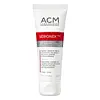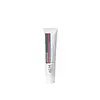What's inside
What's inside
 Key Ingredients
Key Ingredients

 Benefits
Benefits

 Concerns
Concerns

 Ingredients Side-by-side
Ingredients Side-by-side

Water
Skin ConditioningGlycerin
HumectantNiacinamide
SmoothingGlyceryl Stearate Citrate
EmollientIsononyl Isononanoate
EmollientButylene Glycol
HumectantC15-19 Alkane
SolventPotassium Cetyl Phosphate
EmulsifyingC12-13 Alkyl Lactate
EmollientStearic Acid
CleansingPalmitic Acid
EmollientXanthan Gum
EmulsifyingGlycolic Acid
BufferingZinc Gluconate
Skin ConditioningAmmonia
BufferingLactic Acid
BufferingBisabolol
MaskingBiotin
AntiseborrhoeicSalicylic Acid
MaskingCapryloyl Glycine
CleansingSodium Hydroxide
BufferingCaprylic Acid
CleansingSodium Benzoate
MaskingCitric Acid
BufferingParfum
MaskingWater, Glycerin, Niacinamide, Glyceryl Stearate Citrate, Isononyl Isononanoate, Butylene Glycol, C15-19 Alkane, Potassium Cetyl Phosphate, C12-13 Alkyl Lactate, Stearic Acid, Palmitic Acid, Xanthan Gum, Glycolic Acid, Zinc Gluconate, Ammonia, Lactic Acid, Bisabolol, Biotin, Salicylic Acid, Capryloyl Glycine, Sodium Hydroxide, Caprylic Acid, Sodium Benzoate, Citric Acid, Parfum
Water
Skin ConditioningAzelaic Acid
BufferingOctyldodecyl Myristate
EmollientIsononyl Isononanoate
EmollientIsostearyl Isostearate
EmollientCetyl Alcohol
EmollientGlyceryl Stearate
EmollientEthoxydiglycol
HumectantGlycerin
HumectantCoco-Caprylate/Caprate
EmollientNiacinamide
SmoothingXylitol
HumectantPEG-75 Stearate
Pentylene Glycol
Skin ConditioningCetearyl Alcohol
EmollientCeteth-20
CleansingSteareth-20
CleansingGlyceryl Caprylate/Caprate
EmollientWater, Azelaic Acid, Octyldodecyl Myristate, Isononyl Isononanoate, Isostearyl Isostearate, Cetyl Alcohol, Glyceryl Stearate, Ethoxydiglycol, Glycerin, Coco-Caprylate/Caprate, Niacinamide, Xylitol, PEG-75 Stearate, Pentylene Glycol, Cetearyl Alcohol, Ceteth-20, Steareth-20, Glyceryl Caprylate/Caprate
 Reviews
Reviews

Ingredients Explained
These ingredients are found in both products.
Ingredients higher up in an ingredient list are typically present in a larger amount.
Glycerin is already naturally found in your skin. It helps moisturize and protect your skin.
A study from 2016 found glycerin to be more effective as a humectant than AHAs and hyaluronic acid.
As a humectant, it helps the skin stay hydrated by pulling moisture to your skin. The low molecular weight of glycerin allows it to pull moisture into the deeper layers of your skin.
Hydrated skin improves your skin barrier; Your skin barrier helps protect against irritants and bacteria.
Glycerin has also been found to have antimicrobial and antiviral properties. Due to these properties, glycerin is often used in wound and burn treatments.
In cosmetics, glycerin is usually derived from plants such as soybean or palm. However, it can also be sourced from animals, such as tallow or animal fat.
This ingredient is organic, colorless, odorless, and non-toxic.
Glycerin is the name for this ingredient in American English. British English uses Glycerol/Glycerine.
Learn more about GlycerinIsononyl Isononanoate is a synthetic skin-conditioner and texture enhancer. It is created from nonanoic acid, a fatty acid found in cocoa and lavender oil.
As an emollient, Isononyl Isononanoate helps keep your skin soft and smooth. This is because emollients create a barrier on the skin to trap moisture in.
Isononyl Isononanoate helps give products a velvet feel and improves spreadability.
Learn more about Isononyl IsononanoateNiacinamide is a multitasking form of vitamin B3 that strengthens the skin barrier, reduces pores and dark spots, regulates oil, and improves signs of aging.
And the best part? It's gentle and well-tolerated by most skin types, including sensitive and reactive skin.
You might have heard of "niacin flush", or the reddening of skin that causes itchiness. Niacinamide has not been found to cause this.
In very rare cases, some individuals may not be able to tolerate niacinamide at all or experience an allergic reaction to it.
If you are experiencing flaking, irritation, and dryness with this ingredient, be sure to double check all your products as this ingredient can be found in all categories of skincare.
When incorporating niacinamide into your routine, look out for concentration amounts. Typically, 5% niacinamide provides benefits such as fading dark spots. However, if you have sensitive skin, it is better to begin with a smaller concentration.
When you apply niacinamide to your skin, your body converts it into nicotinamide adenine dinucleotide (NAD). NAD is an essential coenzyme that is already found in your cells as "fuel" and powers countless biological processes.
In your skin, NAD helps repair cell damage, produce new healthy cells, support collagen production, strengthen the skin barrier, and fight environmental stressors (like UV and pollution).
Our natural NAD levels start to decline with age, leading to slower skin repair, visible aging, and a weaker skin barrier. By providing your skin niacinamide, you're recharging your skin's NAD levels. This leads to stronger, healthier, and younger looking skin.
Another name for vitamin B3 is nicotinamide. This vitamin is water-soluble and our bodies don't store it. We obtain Vitamin B3 from either food or skincare. Meat, fish, wheat, yeast, and leafy greens contain vitamin B3.
The type of niacinamide used in skincare is synthetically created.
Learn more about NiacinamideWater. It's the most common cosmetic ingredient of all. You'll usually see it at the top of ingredient lists, meaning that it makes up the largest part of the product.
So why is it so popular? Water most often acts as a solvent - this means that it helps dissolve other ingredients into the formulation.
You'll also recognize water as that liquid we all need to stay alive. If you see this, drink a glass of water. Stay hydrated!
Learn more about Water